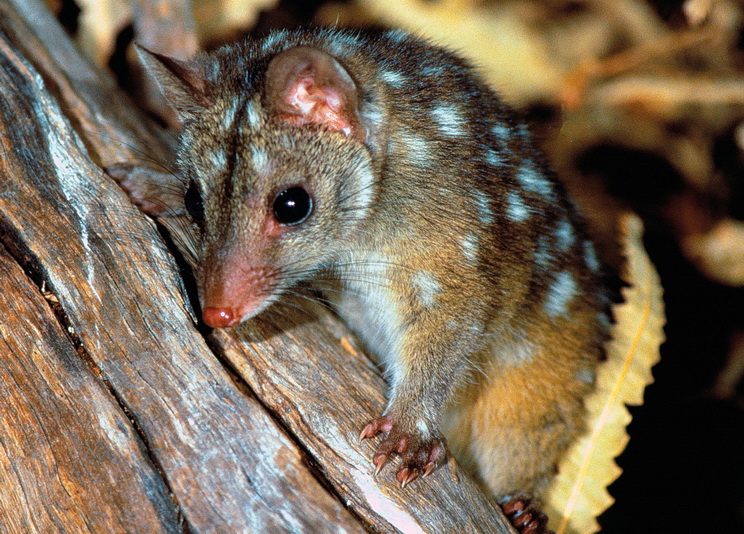AWC scientists have made a significant discovery which demonstrates the expansive range and mobility of feral predators.
A feral cat has been tracked traversing an incredible 170 kilometres in drought-ridden north-western New South Wales, evidence of just how difficult it is to manage these predators. Feral cats kill over 2,000 animals across Australia every minute.
Lead researcher, AWC Wildlife ecologist Dr Andrew Carter, says the implications of this research are significant.
“If you drew a 170km radius from all towns in Australia, I don’t think there’d be much land left that would be out of reach of wandering cats. In other words, stray cats from towns could easily end up in our bush eating our animals,” Dr Carter said.
This new insight bolsters Dr Andrew Carter’s previous research on feral predators at Scotia Wildlife Sanctuary. The movement data obtained from tracked cats at Scotia and the Pilliga will allow AWC to accurately estimate the density of these feral predators – and will help inform strategies for managing feral cats and foxes in open (unfenced) landscapes.
 AWC
AWC
Beyond the fence
AWC’s network of fenced predator free areas offer immediate and permanent refuge for some of the largest remaining populations of Australia’s most endangered mammals – such as Bridled Nailtail Wallabies, Bilbies, Bettongs and Numbats. However, no existing control method can reliably suppress densities of feral cats to allow highly susceptible mammals to survive outside fenced areas.
Since 2015, therefore, AWC has been undertaking a major research project on feral predators, as part of a wider, ‘beyond the fence’ strategy.
Incorporating several phases, the aim of AWC’s pioneering research is to determine whether cats and foxes can be sufficiently suppressed in unfenced landscapes to levels which allow native mammals to increase and/or re-establish self-sustaining populations.
The ultimate goal is the sustainable reintroduction of threatened native mammals to unfenced landscapes.
 © AWC
© AWC
The research
The first phase of the research involved fitting 28 foxes and 30 feral cats with GPS collars outside the conservation fence at Scotia. Since 2015, these collars have collectively yielded over 200,000 location data points. Data analysis has revealed, for the first time, detailed information on the behaviour, movements and home ranges of feral cats and foxes in the study area.
As a result of the research, we have been able to accurately estimate the population density of foxes at Scotia: on average, there were eight foxes per 10,000 hectares, before control measures were implemented.
 © AWC
© AWC
In October 2017, AWC implemented fox control in the experimental area at Scotia, which successfully culled all but one of the collared foxes. Fox control has continued since then, with the research focused on the long-term response of foxes and feral cats to the control effort. AWC researchers have also been working on new approaches for estimating fox density.
More challenging is working out the density of feral cats, due to the nomadic nature of some individuals – something reinforced by Dr Andrew Carter’s ground-breaking discovery at the Pilliga.
 © AWC
© AWC
In 2018 in the Pilliga, Dr Andrew Carter and his team deployed 30 camera traps across 15,000 hectares, as well as fitting feral cats and foxes with GPS collars to track their movements. It was here that the range of 170 kilometres of a feral cat was discovered, providing crucial insight into how our previous research findings at Scotia relate to other environments.
Research is now expanding to AWC’s Mt Gibson Wildlife Sanctuary, where cameras will be deployed across 12,000 hectares to monitor changes in fox and feral cat densities in response to control measures.
The aim is to eventually reintroduce declining wildlife like the Western Quoll and Brushtail Possum, but this cannot be achieved without first understanding feral fox and cat populations, and using this knowledge to effectively maintain feral predators at sufficiently low densities over the long-term.
 © Lochman Transparencies/AWC
© Lochman Transparencies/AWC
How can you help?
Effective feral predator control, and a reliable methodology for estimating their population densities, are absolutely crucial if Australia’s native mammal populations are to ever re-establish and increase outside fenced areas.
By supporting this important research you help secure the future of Australia’s threatened species.
 ©AWC
©AWC
Please consider supporting this ground-breaking research to control feral predators ‘beyond the fence.’ Please click below to donate.
Click below to donate
Donate Now